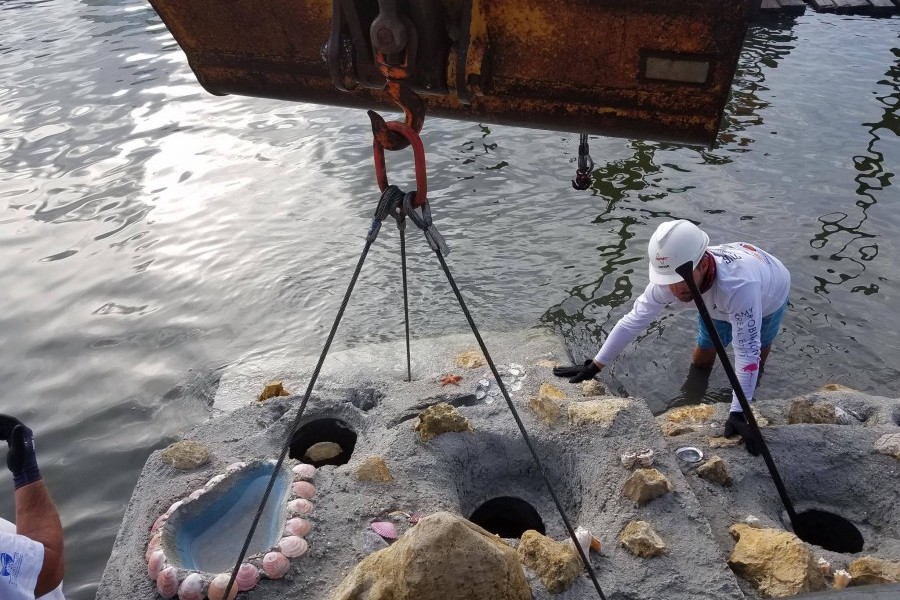Mote scientists to study Sarasota’s new ‘living seawall’

Installation of a living seawall at Sarasota's Bayfront Park in October 2018. Credit: City of Sarasota
Mote Marine Laboratory scientists are monitoring the new “living seawall” installed by the City of Sarasota last week along 262 feet of Sarasota’s Bayfront Park with the goal of attracting more marine life to benefit Sarasota Bay.
The living seawall is a series of naturalistic concrete, rock and shell structures full of nooks and crannies designed to attract fish, oysters and other living things, absorb wave energy without causing erosion, and improve aesthetics. It was made possible through the city’s collaboration with the Sarasota-based company Reef Innovations and was funded with settlement dollars from the BP Deepwater Horizon oil spill.
The new installation presents an important opportunity for research on living seawalls, which are increasingly popular due to their purported benefits over the more homogenous, traditional seawalls used to harden many shorelines against erosion.
“Living shorelines and living seawalls have been touted as environmental friendly methods of erosion control, but more scientific studies are needed to document any beneficial changes in animal and plant species’ diversity or abundance, along with any related chemical, physical and sediment structure change that can influence the composition of species living there,” said Jim Culter, Benthic Ecology Program Manager at Mote. “This is a great opportunity to investigate all of these characteristics, and we are pleased to work with the City of Sarasota to do just that.”
Mote scientists gathered baseline data on site before the living seawall installation, and they will sample periodically for two years, focusing on: the abundance and diversity of marine life; water chemistry features such as nutrients and pH (related to acidity and alkalinity); physical characteristics such as water temperature and the height and frequency of waves; and soil structure, which helps shape the bottom-dwelling community of animals and plants including seagrass. They will also sample other habitats without living seawalls for comparison, including intertidal sand-shell-rubble substratum, sandy beach and a more traditionally structured seawall.
“We look forward to gaining a better understanding of the impacts of the living seawall and how it relates to our marine environment through our partnership with Mote Marine Laboratory,” said Stevie Freeman-Montes, the city’s sustainability manager. “This project was also designed and built here in Sarasota, so it’s a testament to the incredible resources and research capabilities of our community.”